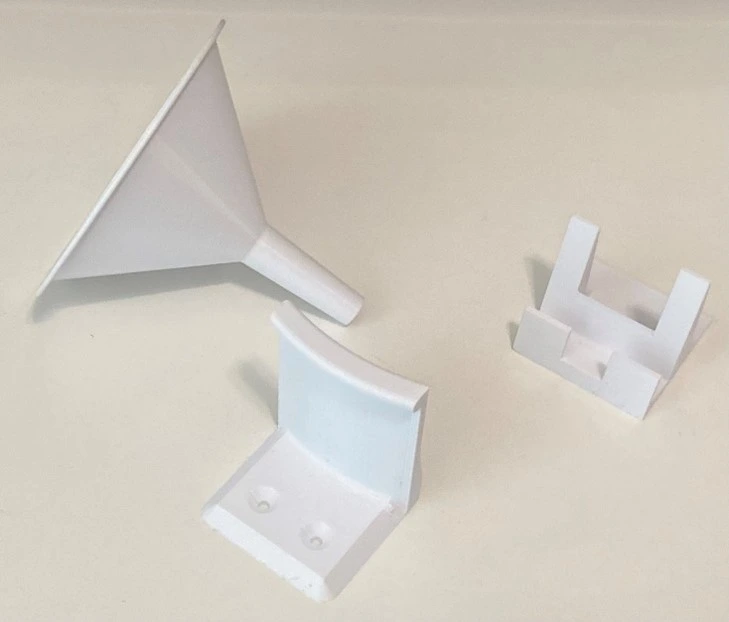Green 3D Printing

Fig.1. Setting up a new 3D printer in the lab for sustainability research.
3D Printing is useful for many different applications including prosthetics for healthcare, automobile components and picture frames for hobbyists. I have personally made toys, funnels, and phone stands using a desktop 3D printer. Just like any other machine these benefits come with the added cost of electricity and effects on the environment. Nonetheless, a study (Gebler et. al, 2014) showed that by 2025, 3D printing has the potential to reduce industrial energy demand by about 5% and CO2 emissions by at least 130 megatons.
I come from a background where 3D printing is growing rapidly with the potential for many diverse domestic and industrial applications. Users can make simple to complex designs using a 3D printer. My interest in engineering began in a high school physics class, through my participation in mechanics and energy lab work. I proceeded to study Mechanical Engineering as an undergraduate student and engaged in several projects including designing a solar streetlight as a community project. In the past three years, I grew interested in the power consumption of 3D printers hoping to provide users with information on sustainable practices or decisions while manufacturing a part. My projects have led me to interact with various stakeholders including makerspace communities and other engineering professionals at conferences.

Fig. 2. Sample 3D printed parts made in my lab.
During my senior year, I participated in research focused on energy efficiency and that propelled me further into my interest in sustainability. My focus was renewable energy sources like biomass and their contribution to environmental sustainability. This ultimately led me to my master’s research which focused on investigating a novel engine that was designed to be highly energy efficient. In 2021, I started my doctorate program at the University of Arizona in the Systems and Industrial Engineering department continuing my interest in energy efficiency research. I began researching material extrusion 3D printers which make an object by depositing heated polymer material layer after layer starting on a base. I studied their energy efficiency and built an energy consumption database to support sustainability efforts in the field.
During an educational outreach program where I gave a 3D printing demo in my department, a high school student mentioned how important the cost of electricity is when using any equipment. This led me to ask further questions as I contemplated on the ensuing discussion. The rising cost of power is a global issue, and even more concerning are the calls for sustainability. There is increasing pressure worldwide regarding environmental sustainability given concerns about the depletion of resources and pollution of the environment. 3D printing also heavily relies on both material and energy resources. Unfortunately, with the growing concerns about the environmental impact of factory operations including manufacturing there is a need to promote more sustainable practices and decision making in 3D printing. This has been a major source of motivation for all my projects.
For my project, I will continue collecting more energy data from a wide variety of 3D printers and testing a software tool to predict energy usage for 3D printing aimed towards increasing sustainability. I will also look at the entire life cycle of the process to better capture the environmental impacts of the 3D printing process. Better decision making during the early stages before making an object can greatly promote a more sustainable outcome. As I embark on this journey, I realize that everyone can be responsible for building a more sustainable future through our everyday decisions. Moreover, the world cares more about sustainability than it may at first appear.
This project is a continuation of collaborative efforts with the CATalyst studios Makerspace and Engineering Design center at the University of Arizona to promote sustainability efforts on the campus and beyond. We seek to extend the partnership to other institutions, especially within the state of Arizona and share the findings to promote sustainable decision making in 3D printing. I hope to use this opportunity to broaden and forge new collaborations to further my research and promote a more sustainable mindset in 3D printing. There is potential to reduce the aggregate environmental footprint through this technology.
Reference: https://doi.org/10.1016/j.enpol.2014.08.033.
This project is supported by the CLIMAS Environment & Society Fellowship program, the Arizona Institute for Resilience, and the Office for Research, Innovation, and Impact at the University of Arizona. Graduate fellows conduct collaborative and societally-informed research that addresses pressing environmental challenges around the world.

